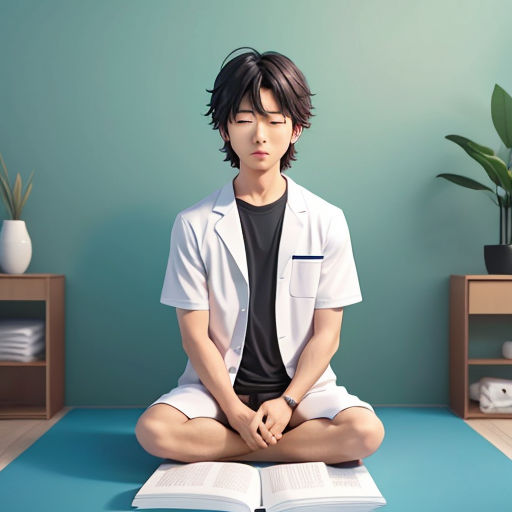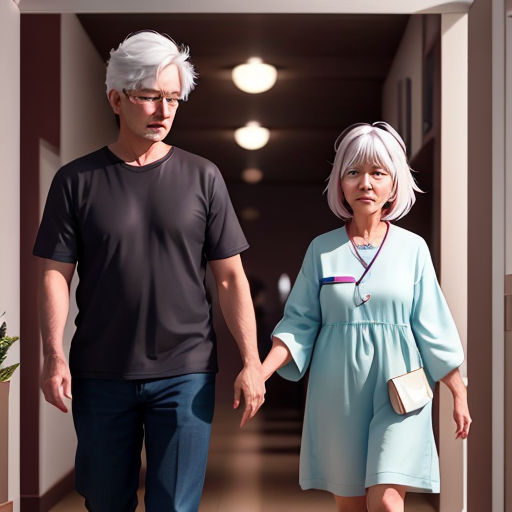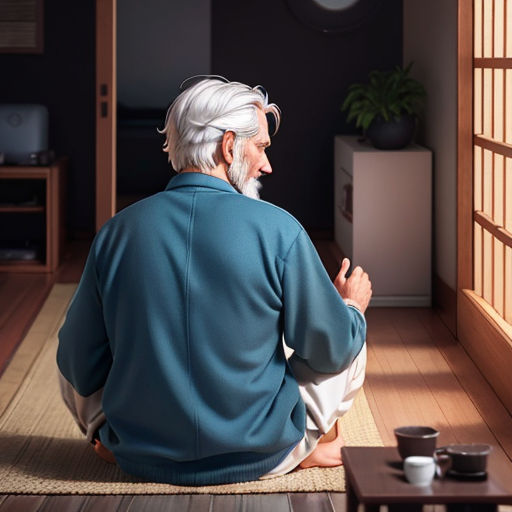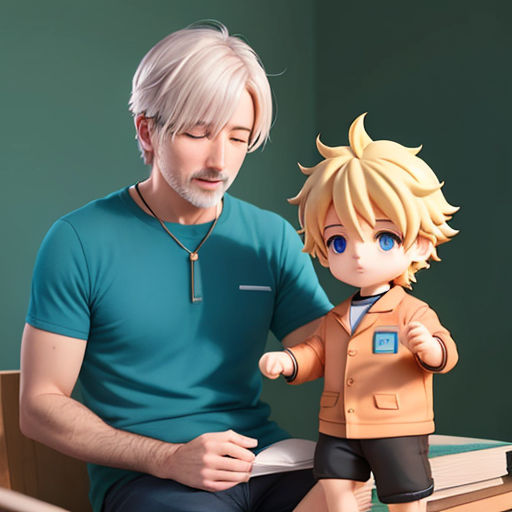
The Sweating Man
By Storybird

06 Jun, 2023

Once upon a time, there was a man whose heart raced with the beat of a thousand drums and whose body dripped with sweat despite the chilly weather outside. As he sat in the doctor's office, he felt a swirl of emotions rising inside him - fear, anxiety and uncertainty. The stark white walls and the antiseptic smell of the clinic did nothing to soothe his nerves. But little did he know that this was just the beginning of an extraordinary adventure that would take him to places he had never imagined.

The doctor discovers that the man's autonomic nervous system is overactive. He recommends a visit to a nearby clinic that specializes in alternative methods of healing. The man is hesitant, but the doctor insists it could be the key to his recovery. With a heavy heart, the man sets out on a journey to find the clinic.

The man learns about how the autonomic nervous system works. At the clinic, he meets Dr. Mei, who explains that the ANS controls our body's vital functions like breathing, heart rate, digestion, etc. She tells him about different techniques like breathing exercises, meditation, and yoga that can help regulate the ANS. The man feels hopeful and determined to give it a try.

The man tries to control his symptoms but struggles. At first, the breathing exercises feel like a chore, the meditation feels like a waste of time, and the yoga feels impractical. But with each passing day, he notices small improvements. He is sleeping better, his heart isn't racing as much, and he even notices a little bit more color in his cheeks. Dr. Mei encourages him to keep practicing, reminding him that healing takes time.

The man talks to his family and friends about his symptoms. His loved ones listen intently, and some of them sympathize. Surprisingly, some also share their own experiences of feeling anxious, stressed, or helpless. It dawns on him that he is not alone in this struggle, and that realization gives him a sense of relief. He thanks them for their support and promises to keep them updated on his journey.

The man meets a young girl in the clinic's waiting room who also has an autonomic nervous system disorder. She seems shy at first, but when the man smiles at her, she smiles back. He introduces himself, and she tells him her name is Lily. They start talking about their symptoms and the challenges they face. The man realizes that it feels good to talk to someone who understands what he's going through.

The man and the young girl become friends and support each other. They exchange tips on how to manage their symptoms and share stories about their lives outside the clinic. They play board games, do crafts, and even take walks together. They make each other laugh and sometimes cry too. The man feels grateful to have met Lily, and he starts to look forward to his clinic visits.

The man tries various treatments recommended by his doctor but none of them work. He goes to physical therapy, acupuncture, and even tries a gluten-free diet, but his symptoms persist. He starts to lose hope and wonders if he'll ever feel better. Lily tells him not to give up and reminds him of how far he's come. He realizes that he has a friend in Lily who supports him and that he has learned a lot about himself and his body through this experience.

The man gets frustrated and loses hope of ever feeling better. Despite all the treatments, nothing seems to work. He begins to feel helpless and wonders if he will ever find a solution. But one day, as he sits in the clinic's waiting room, he notices a painting on the wall. It is a vibrant colorful landscape, and it catches his attention. He looks closely and notices how the brushstrokes and colors blend seamlessly. Instantly, he feels calm. He realizes that he hasn't paid much attention to his surroundings and starts to notice other artworks in the room. He feels an inner peace he hasn't felt before.

The man meets a wise old man who teaches him about meditation and mindfulness. The old man is a retired monk who lives in a nearby village. He notices the man's restlessness and invites him to spend a day at his place. The man is skeptical but curious. The old man welcomes him and shows him around his garden. He teaches him about the art of meditation, demonstrating simple techniques like focusing on the breath and visualization. The man feels awkward at first but slowly starts to relax. He tells the old man about his condition, and the old man nods knowingly. He tells him about the importance of mindfulness - being aware of the present moment - and how it can help regulate the ANS. The man listens intently and feels inspired.

The man starts practicing meditation and mindfulness and begins to notice improvement in his symptoms. He sets a routine and wakes up early every day to meditate. He visualizes calm and peaceful scenes like the old man taught him. He practices mindfulness by focusing on each moment and not worrying about the future or past. Slowly, he notices that his symptoms become less frequent and less intense. His thoughts become clearer, and his mood improves. He feels like he has found a new way of living and is grateful to the old man for showing him the path.

The man becomes fascinated with how the mind and body are connected. He starts to read articles and watch videos on this topic. He discovers that stress and anxiety can affect our physical health and that mindfulness and relaxation can help alleviate many ailments. He is determined to learn more and starts to attend workshops and seminars on the subject. He feels empowered by this newfound knowledge and starts to see himself and his condition in a new light.

The man starts reading books about the mind-body connection and learns more about himself. He reads about the power of positive thinking and how our thoughts can affect our health. He starts to observe his thoughts and tries to reframe any negative ones. He discovers that visualization can help him relax and ease his symptoms. He starts to visualize a future where he is healthy and active. He also reads about the importance of self-care and starts to take better care of himself, mentally and physically.

The man starts making healthier lifestyle choices and incorporates regular exercise and a balanced diet. He starts with small changes like going for a brisk walk in the park and adding more vegetables to his meals. He feels better and more energized. He sets realistic goals and works towards them, constantly pushing himself to do better. He starts to notice a difference in his appearance and his mood. He feels proud of himself and grateful for the journey he has been on.

The man comes to the realization that his symptoms are directly linked to his stress levels. He discovers that stress and anxiety can trigger autonomic nervous system disorders, and this empowers him to take control of his life. He starts practicing stress-reducing techniques like deep breathing, progressive muscle relaxation, and meditation. These techniques make him feel more relaxed and help him manage his symptoms better.

The man joins a support group for people with autonomic nervous system disorders. He meets others who share similar symptoms and challenges. They share stories, empathize with each other, and encourage one another. The man feels understood and not alone in his journey. He participates in advocacy campaigns for ANS disorders and helps raise awareness about the condition. He learns about different treatments and therapies, and he shares his experiences with others.

The man realizes that he wants to help others with similar disorders. He becomes an advocate for awareness and education. He starts giving talks at local schools about ANS disorders, hoping to educate children about the condition. He also volunteers at the clinic where he received treatment, helping patients and their families navigate through the journey of ANS disorders. He feels fulfilled and purposeful, knowing that his experiences can help others.

The man writes a book about his experiences and shares it with others to help them understand and cope with similar challenges. He writes in a simple and engaging language, aimed at children and adults alike. He talks about his journey, the ups and downs, the challenges and joys. He shares tips and advice on how to manage ANS disorders, emphasizing the importance of self-care and mindfulness. He hopes that his book can help others, and he feels proud of what he has accomplished.